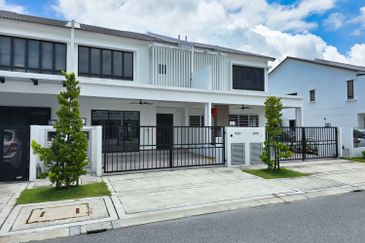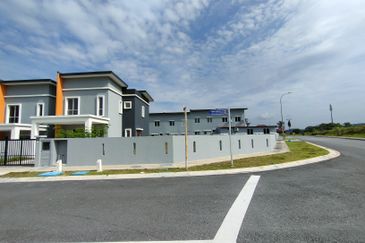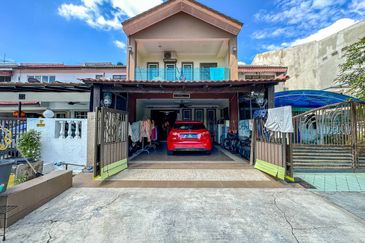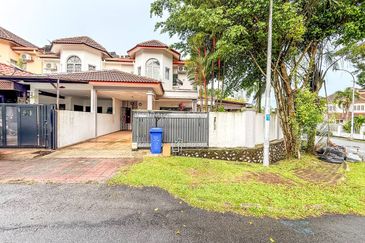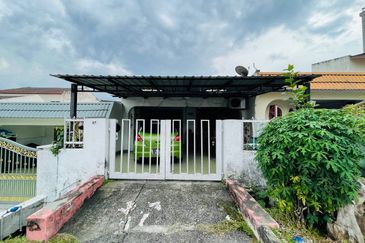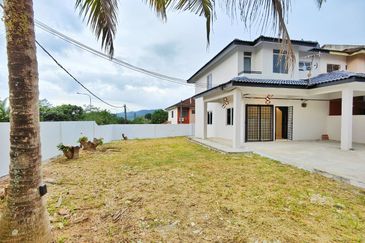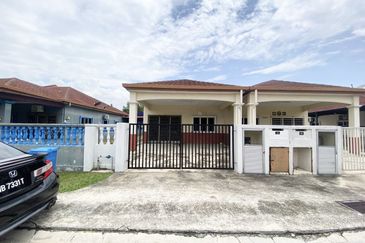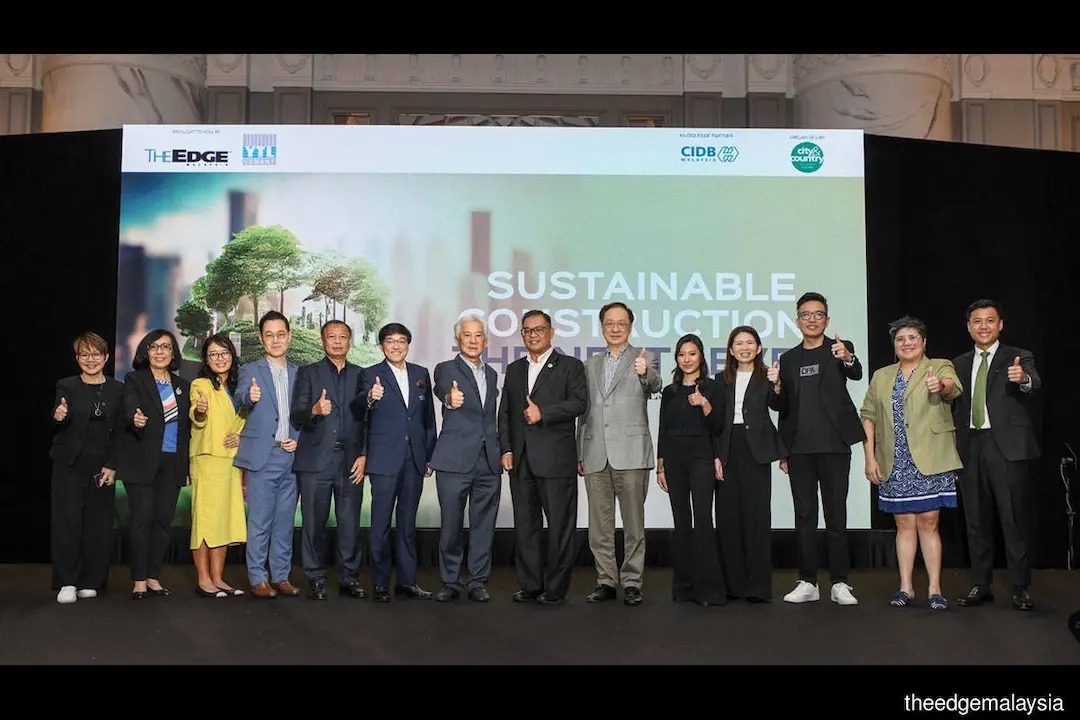
- The Edge Media Group publisher and group CEO Datuk Ho Kay Tat: "We must embrace a new era of sustainable construction. The road ahead is undoubtedly challenging. The initial costs of sustainable materials and technologies can be daunting. Regulatory frameworks may be complex and restrictive. These obstacles, however, are not insurmountable."
KUALA LUMPUR (July 31): The journey towards sustainable construction may be riddled with challenges, but with the sharing of knowledge and best practices at events such as The Edge Malaysia and YTL Cement's Sustainable Construction: The Next Level Symposium that was held on Wednesday at JW Marriott Hotel Kuala Lumpur, industry players can come together and look at how they can overcome such challenges and drive innovation.
The by-invitation only event featuring the theme Sustainable Construction Tomorrow: Milestones & Opportunities was attended by over 300 industry stakeholders consisting of C-suites and directors of property development and construction companies and related associations.
The event was organised by The Edge Malaysia and YTL Cement, with the Construction Industry Development Board (CIDB) Malaysia serving as the knowledge partner.
In his opening address, The Edge Media Group publisher and group CEO Datuk Ho Kay Tat said that the construction sector, which is central to economic development, has significantly contributed to climate change and resource depletion. “It is now time to recognise that business as usual is no longer an option. We must embrace a new era of sustainable construction. The road ahead is undoubtedly challenging. The initial costs of sustainable materials and technologies can be daunting. Regulatory frameworks may be complex and restrictive."
He also noted that there is a persistent misconception that sustainability compromises efficiency and profitability. “These obstacles, however, are not insurmountable. Indeed, they present opportunities for innovation, collaboration, and leadership from all of you. It is time for the industry to explore the solutions that are within our grasp."
In her welcome note, YTL Cement executive director Rachel Yeoh noted that the country can cut carbon emissions by up to 60% if there is a switch to using only low-carbon cement and concrete in all construction projects. “This is a significant number to achieve carbon neutrality by 2050. While this represents a significant process, there remains a vast untapped potential in alternative fuels." She added that for every tonne of biomass used domestically, there can be a CO2 reduction by 1.2 million tonnes.
Speakers for the first half of the symposium are SAMOO Architects & Engineers associate principal/urban designer Yang Sung-Min, Real Estate Housing Developers Association (Rehda) Malaysia president Datuk Ho Hon Sang and Construction Industry Development Board (CIDB) Malaysia chief executive Datuk Mohd Zaid Zakaria.
The second half of the event featured a panel discussion on Sustainability: Now and Beyond moderated by The Edge Media Group editor emeritus Au Foong Yee. The panel speakers are YTL Cement head of sustainability Clarisse Loh, PNB Merdeka Ventures CEO Tengku Datuk Ab Aziz Tengku Mahmud and DP Architects CEO Seah Chee Huang.
In his presentation entitled Oceanix Busan: An Answer to Rising Sea Level, SAMOO’s Yang shared about the Oceanix Busan floating city project located in South Korea that was commissioned in 2022 to address the issue of rising sea levels as a result of climate change, which can affect major cities around the world. “By 2035, 90% of large cities with over 10 million people will have access to coastlines, and we believe that floating cities can be a solution. It is not just a floating structure, this represents a sustainable future."
Yang noted that the project is still at its prototype stage and is being built with key stakeholders close to the coast.
Rehda Malaysia's Ho talks about the present state of Malaysia in its transition towards sustainable construction as well as the misconceptions pertaining to it in his presentation, Reality vs Fallacies.
Ho highlighted a common feedback is that technologies such as the Industrialised Building System (IBS) and Building Information Modelling (BIM) are costly and difficult to implement. “I have seen an example of a developer utilising a precast plant on-site. There were minimal complaints from the residents on the quality of the buildings and there were no higher costs. In fact, it is equivalent to that of a conventional construction method."
CIDB’s Zaid Zakaria, in his presentation on the Journey Towards Sustainable Construction, said that sustainable construction is no longer a choice but a necessity. “It has evolved from a niche concept to a fundamental one. Sustainable construction minimises environmental harm and maximises societal and economic benefits.”
Zaid added that challenges remain, however, with cost implications, market acceptance and skill gaps being the major ones. “Hence, we should focus on driving innovation, education and policy advoacy. Collaboration between stakeholders will be crucial."
During the panel speakers' sessions, YTL Cement’s Loh in her presentation entitled Building Together shared that incorporating new and eco-friendly cement products and technology are among the decarbonisation efforts by YTL Cement. “Each year, we have a pipeline of projects to improve operational efficiencies, reduce greenhouse gas emissions and energy consumption."
In his presentation entitled Building Merdeka 118: A Paradigm Shift, PNB’s Ab Aziz walked the audience through the construction journey of Merdeka 118 and its sustainable construction efforts.
He said that Merdeka 118 incorporates sustainable site planning and management to reduce water and energy consumption. “We have managed to achieve an energy reduction of 30%."
In his presentation titled Sustainable Designs: What’s Next?, DP Architect’s Seah highlighted how extreme weather conditions are disrupting the way we live. “We have to be better than sustainable," he said.
He also shared several sustainable projects by his company in Singapore including an adaptive reuse project of Golden Mile Complex building and building an integrated green hub, Bukit Canberra.
During the panel discussion with the theme Sustainability: Now and Beyond, Loh, Ab Aziz and Seah asked each of the speakers what they would do to better champion sustainability if they were given a silver bullet.
Loh said she would opt for a change in mindset and not be constrained by the present way of doing things, while Ab Aziz hoped to complete development projects on time and within budget. For Seah, he said that education is still key to changing mindsets when it comes to sustainability.
After the symposium, 50 guests took part in a study tour to Merdeka 118, during which Ab Aziz shared further insights on the development including the history and overall master plan and gave a tour of the skyscraper's upper floors.
Looking to buy a home? Sign up for EdgeProp START and get exclusive rewards and vouchers for ANY home purchase in Malaysia (primary or subsale)!
TOP PICKS BY EDGEPROP
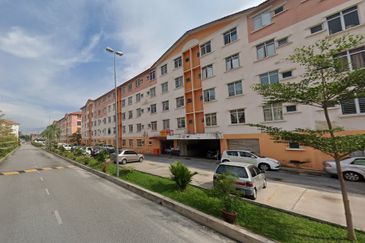
Seremban Putra Apartments
Seremban, Negeri Sembilan
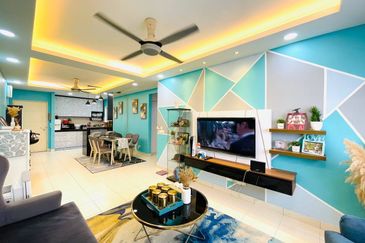
De Bayu Apartment @ Setia Alam
Shah Alam, Selangor
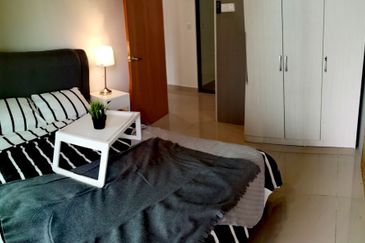
Citizen 2
Jalan Klang Lama (Old Klang Road), Kuala Lumpur


